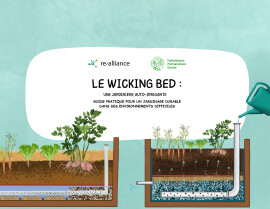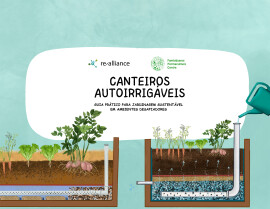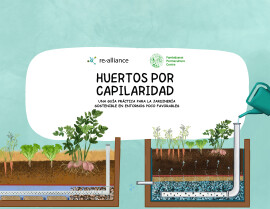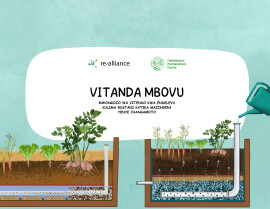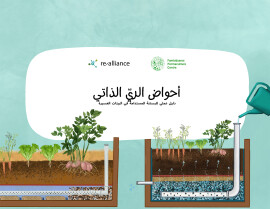
Rural Vulnerability to Famine in Ethiopia
1958-77
Prescriptions for rural development abound, but ‘what is frequently lacking is not so much ideas or techniques as the will and the commitment’ to improve conditions. The author describes how, in the complex case of Ethiopia, man can be held responsible for famine –and suggests how he can act to prevent it. This book sets out to demonstrate that the subsistence production system, with the disincentives of oppression and exploitation which keeps peasants and their families permanently at barely subsistence level without any means of averting or coping with the consequences of crop failure, is the system that creates famine in time of peace. A subsistence production system impoverishes peasants and pastoralists as well as the physical environment. It is this fact that occasionally disturbs the delicate balance between the activities and expectations of the peasants and the pastoralists, on one hand, and the process of the physical environment, on the other. When this delicate balance is disturbed famine does not occur automatically, but instead takes several months to mature into a mass killer.
The author urges positive and rational action – for example, the accumulation of data, programmes of research and development, and reform, especially of taxation, can create the conditions necessary for improvement. ‘The world of under development is a world of faith as opposed to critical reason... The pain of thinking can replace the pain of famine.’
Published: 1986
Pages: 208
eBook: 9781780445847
Paperback: 9780946688036
The author urges positive and rational action – for example, the accumulation of data, programmes of research and development, and reform, especially of taxation, can create the conditions necessary for improvement. ‘The world of under development is a world of faith as opposed to critical reason... The pain of thinking can replace the pain of famine.’
| PART I : INTRODUCTION | |||
|---|---|---|---|
| Chapter One | |||
| Introduction 3. | |||
| PART 11: THE PROBLEM OF FAMINE | |||
| Chapter Two | |||
| The Problem of Famine in Ethiopia 31 | |||
| Chapter Three | |||
| The Consequences of Famine 55 | |||
| PART III : VULNERABILITY TO FAMINE | |||
| Chapter Four | |||
| The Socio-Economic Conditions of Peasant Life 73. | |||
| Chapter Five | |||
| The Role of the State in Famine 102 | |||
| PART IV : THE EXPLANATIONS OF FAMINE | |||
| Chapter Six | |||
| Conventional Explanations of Famine 121 | |||
| Chapter Seven | |||
| The Analysis of Famines in Ethiopia: A New Explanation 146 | |||
| PART V : CONCLUSIONS | |||
| Chapter Eight | |||
| Conclusion 177 | |||
| Index 189 |
Mesfin Wolde Mariam
In 1990, Mesfin Wolde Mariam founded the Ethiopian Human Rights Council and is now one of Ethiopia's best known human rights activists.
Households Social Vulnerability to Food Insecurity and Coping Strategies in Raya Kobo and Raya Alamata Woredas, Ethiopia
Hidaru, Agezew
Tolossa, Degefa
Tilahun, Temesgen
Sustainability, Vol. 15 (2022), Iss. 1 P.160
https://doi.org/10.3390/su15010160 [Citations: 3]Prosecution of Politicide in Ethiopia
Historical Survey of the Derg Regime and the Infamous Red Terror
Tessema, Marshet Tadesse
2018
https://doi.org/10.1007/978-94-6265-255-2_2 [Citations: 0]Post-famine recovery in highland Bwisha, Zaire: 1984 in its context
Pottier, Johan
Fairhead, James
Africa, Vol. 61 (1991), Iss. 4 P.437
https://doi.org/10.2307/1160532 [Citations: 10]Recent Research Trends in Disaster Studies: Human Geographical Perspective
SODA, Ryoji
Geographical Studies, Vol. 90 (2015), Iss. 2 P.16
https://doi.org/10.7886/hgs.90.16 [Citations: 1]Climate variability, political crises, and historical population displacements in Ethiopia
Comenetz, Joshua
Caviedes, César
Environmental Hazards, Vol. 4 (2002), Iss. 4 P.113
https://doi.org/10.3763/ehaz.2002.0413 [Citations: 9]Gender Differentials in Migration Impacts in Southern Ethiopia
Regassa, Nigatu
Yusufe, Ansha
The Anthropologist, Vol. 11 (2009), Iss. 2 P.129
https://doi.org/10.1080/09720073.2009.11891092 [Citations: 13]A Re‐assessment of Entitlement Theory in the Light of the Recent Famines in Africa
de Waal, Alex
Development and Change, Vol. 21 (1990), Iss. 3 P.469
https://doi.org/10.1111/j.1467-7660.1990.tb00384.x [Citations: 62]Ethnic federalism and its potential to dismember the Ethiopian state
Mehretu, Assefa
Progress in Development Studies, Vol. 12 (2012), Iss. 2-3 P.113
https://doi.org/10.1177/146499341101200303 [Citations: 24]Introductory Analysis of Social Vulnerability in Rural Africa
SHIMADA, Shuhei
E-journal GEO, Vol. 3 (2009), Iss. 2 P.2_1
https://doi.org/10.4157/ejgeo.3.2_1 [Citations: 1]Foreign Capital Flows and Economic Development in Africa
The Concept of Land in Ethiopian Tradition: Land, Power, and Famine
Wolde-Mariam, Mesfin
2017
https://doi.org/10.1057/978-1-137-53496-5_9 [Citations: 0]Sen's Entitlement Approach: Critiques and Counter-critiques
Devereux, Stephen
Oxford Development Studies, Vol. 29 (2001), Iss. 3 P.245
https://doi.org/10.1080/13600810120088859 [Citations: 263]The Demographic Transition and Development in Africa
Are there Mixed Malthusian and Boserupian Consequences of Population Pressure and Food Insecurity? Vulnerability and Demographic Responses in 16 Drought-Prone Districts Throughout Ethiopia
Teller, Charles
2011
https://doi.org/10.1007/978-90-481-8918-2_12 [Citations: 3]Famine in Africa: A Select and Annotated Bibliography
Yakubu, A. O.
A Current Bibliography on African Affairs, Vol. 23 (1991), Iss. 2 P.105
https://doi.org/10.1177/001132559202300201 [Citations: 0]The Gendered Nature of Natural Disasters: The Impact of Catastrophic Events on the Gender Gap in Life Expectancy, 1981–2002
Neumayer, Eric
Plümper, Thomas
Annals of the Association of American Geographers, Vol. 97 (2007), Iss. 3 P.551
https://doi.org/10.1111/j.1467-8306.2007.00563.x [Citations: 784]Isolation as a Development Strategy: Perspectives from an Ethiopian Village
Tarekegn, Tefera
Overton, John
African Geographical Review, Vol. 30 (2011), Iss. 2 P.35
https://doi.org/10.1080/19376812.2011.10539142 [Citations: 2]
